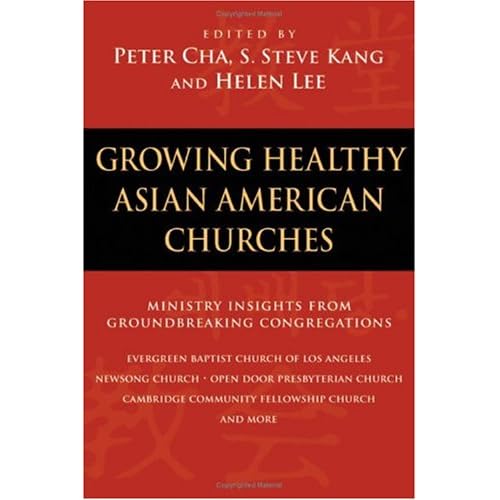The first chapter, “Grace-Filled Households” by Nancy Sigikawa and Steve Wang, provides an excellent opening by distinguishing between an anything-goes grace model and a calling-to-righteousness grace model. Through two examples they show that Asian American churches can show grace by realizing that God’s grace is for all who seek forgiveness and are willing to repent. This model does not overlook sin or relegate the sinner to an outsider’s status. It calls people to righteousness and helps grace flow to situations of hurt, injustice and failure.
“Truth-Embodying Households” by Steve Kang encourages leaders of Asian American Churches to read the Bible unapologetically as Asians but including other perspectives as well. His major thesis is that the most important part of the actions of a church is not whether it is trendy or traditional but because it is either the truth (meaning biblical) or effective (in ministry) to their context. In this way the Word of God becomes the Word of God to the people in that setting. Leaders are encouraged to be discerning when attempting to change what goes on in the church and what is taught.
Helen Lee has two chapters on “Healthy Leaders, Healthy Households” helps leaders see that the most important part of their ministry is to model a healthy household through their leadership team. This is difficult for several reasons, but the major idea is to allow the Bible and American culture to challenge the traditional mindset of Asian leaders to allow them to encourage collaborative leadership, to be humble without going into false humility, to be vulnerable without losing face and allowing disagreements and problems to be dealt with in the open without requiring dissention into the shadows. These two chapters are an excellent primer on Christian leadership and challenges Asian culture without putting it down.
Chapter 5, “Trusting Households: Openness to Change” by Jonathan Wu takes on the task of what change looks like in an Asian American church. He shows how traditional societies need not fear change, especially family-based societies. The difference will be that changes will happen slowly, creating consensus one issue at a time until the desired result is accomplished.
“Hospitable Households: Evangelism” again by Helen Lee comes to very similar conclusions that church planters have been coming to all over the world. Evangelism as done in the past may not be the best way to go forward. The focus of an Asian American church should be less on converting more and more people to their church and more on cultivating disciples of Jesus and allowing that to motivate people into churches. This is an important aspect especially with Asians because the focus on people as rewards for churches instead of followers of God leads churches to become unable to present the gospel to others who are against “church.”
Peter Cha, Paul Kim and Dihan Lee collaborated to write “Multigenerational Households.” As the second generation becomes more Americanized, each generation may see the other as a threat. The key to stopping this is to put each together and encourage each to treat the other with respect and equality.
Peter Cha returns with Grace May to write “Gender Relations in Healthy Households.” In this chapter, they take the thorny issue of women’s roles in the church. I appreciated this chapter as someone who takes Paul’s words serious to all contexts not simply the one he wrote to. Women and men must understand that we should be able to use our spiritual gifts as we are gifted but no one should seek public attention. Neither women nor men should seek a title. Titles should be given to the one who exhibits the qualities of the title. The church would not consider someone who completed Christian training courses without becoming a disciple of Jesus a “Christian.” This often gets lost in this discussion and Cha and May do an adequate but not great job of staying away from this fallacy.
Chapter 9, “Households of Mercy and Justice” focuses on how the church can become good stewards to our neighborhood. This is an important part of our relationship with Jesus. Asian American Christians, who often live in these areas, are encouraged to be more proactive about going to the people in their area. In this way the chapter excels.
Steve Kang ends the discussion with the conclusion: “Measuring the Health of Our Households.” In it he summarizes all of the chapters. He gives a final challenge that although Asian American Christians will forever be foreigners in the USA, they must also remember that they are foreigners on Earth. Through this they must remember to work together for the glory of God.
Overall I found this book refreshing and very important to the ministry to Asians. As someone experienced in working in Mainland China, I found the beginning chapters relevant to that context as well. Unfortunately the book’s beginning half is much stronger than its ending half. However, I would recommend this book to anyone working with Asian Christians either in Asia or the USA.
Cha, Peter, S. Steve Kang, and Helen Lee. 2006. Growing healthy Asian American churches. Downers Grove, Ill.: IVP Books.
2.5/2.5
ReplyDelete